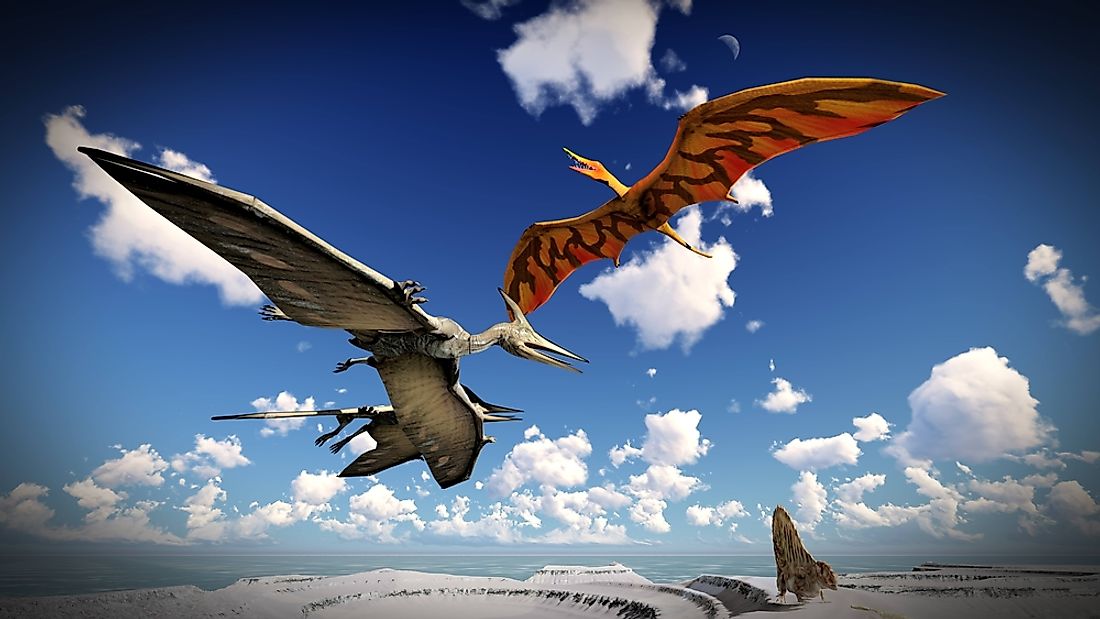Are Pterodactyls Dinosaurs?

Although Pterodactyls lived around the same time as dinosaurs, they are not considered dinosaurs. Initially, paleontologists did not have a specific description for how dinosaurs looked which caused them to confuse pterodactyls for dinosaurs at one point in time. Instead of using descent or physiology to understand dinosaurs, paleontologists used their own imaginations.
What Were Pterodactyls?
Pterodactyls were flying creatures that existed at the same time as dinosaurs. They were not birds, rather they were flying reptiles. The reptiles were also known as pterosaurs. Unlike most reptiles that are cold-blooded, the pterodactyls were warm blooded. Their bodies could even generate heat. Pterodactyls were located in various parts of the world including China, Germany, and America. According to Zitteliana, a German scientific journal written in 2008, pterodactyls existed between two historic periods: the late Triassic Period and the Cretaceous Period. They lived among the dinosaurs and both creatures became extinct at the same time.
History of the Discovery of Pterodactyls
In 1784, an Italian scientist called Cosimo Collini discovered the first pterosaur by the name Pterodactylus. According to Colini, this was a marine creature that could paddle in water with the use of its wings. Years after this discovery, Georges Curvier who was a French naturalist, figured that the Pterodactylus creatures could fly. When another fossil of the animal was found in Bavaria, Germany, he named the creature “Ptero-dactyle.” Scientists used this name until they discovered there were variations in the genera of the flying reptiles. However, the term “pterodactyl” remained popular among their circles.
Etymology
Pterodactylus was derived from the Greek word “pterodaktulos” which means “winged finger.” The creature could fly and the wings were made of a muscle membrane and skin. One muscle membrane was elongated from the pterodactyl’s fourth fingers. The second membrane ran from the wrists to the shoulders and included the first three fingers. On the other hand, the third membrane was between the creature’s legs. It was believed that it may have been connected to its tail.
Physical Features of the Pterodactyls
Physically, the pterodactyls were quite different from dinosaurs. Dinosaurs were very large, huge in size, and were mammals and not reptiles. Pterodactyls had long necks with throat pouches used for hunting their prey. They also possessed long skulls and needle-like teeth. However, a type of pterodactyl known as the Quetzalcoatlus northropi was toothless. Another feature of the pterodactyl was a crest on its head. The crests were in different forms. Some of them were fleshly and had no bones underneath them whereas other pterodactyls had big, bony crests. There is controversy on what the function of the crests were. Scientists suggest that the crests were used for body heat regulation, as rudders during flight, or for sexual selection. However, only the latter function has been proven to be true.
The Feeding Habits of Pterodactyls
The feeding habits of pterodactyls varied with their habitat. Those who lived in the terrestrial regions fed on eggs, baby dinosaurs, lizards, carcasses, insects, and other animals. On the contrary, those who lived in water ate crabs and other shellfish, squid, and other marine animals.
In conclusion, pterodactyls were not dinosaurs. They only lived at the same time as the dinosaurs.











